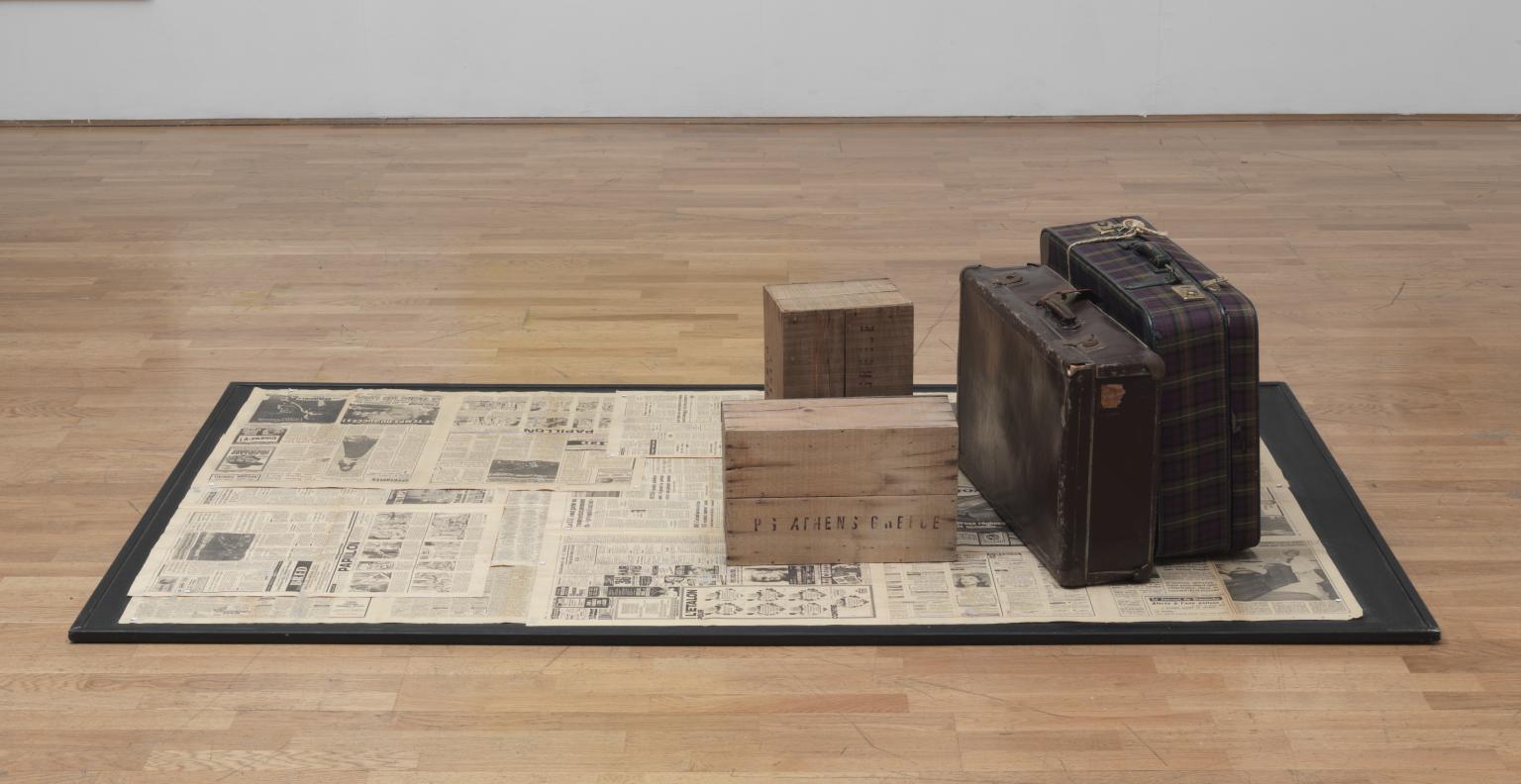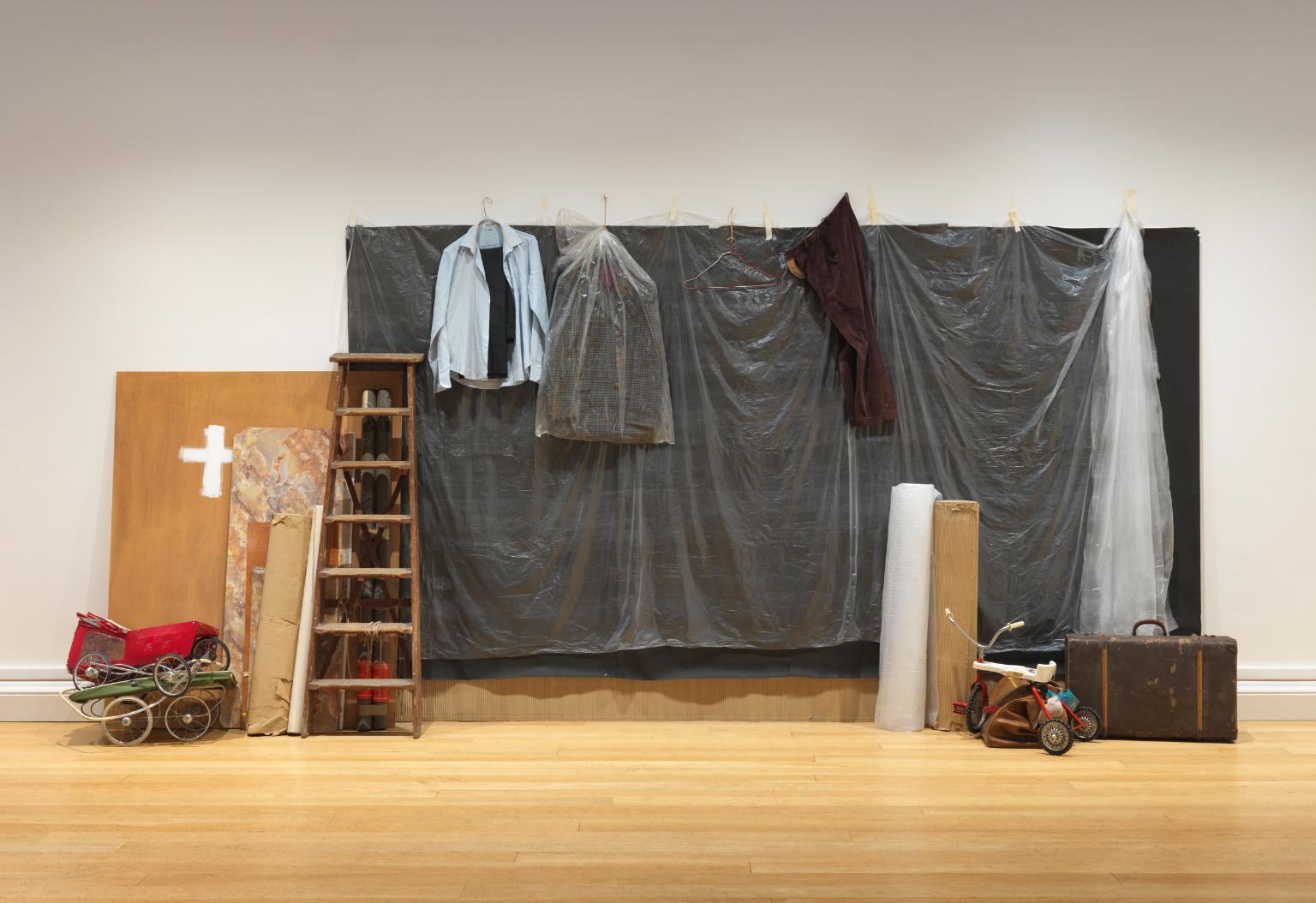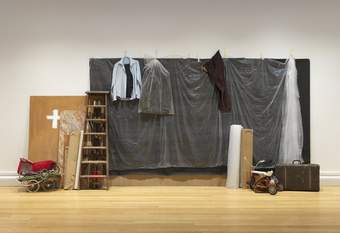12 rooms in Artist and Society
These artists used found objects to make sculptures that demonstrate the political potential of art
Joseph Beuys (1921–1986) and Vlassis Caniaris (1928–2011) took a similar experimental approach when creating installations during the 1970s and 1980s. The artists worked against a backdrop of nationalism in their native countries. For Beuys, it was Germany after the Second World War. For Caniaris, the Greek Civil War and military junta that followed.
As a migrant in Rome, Caniaris encountered ‘arte povera’ – a radical Italian art movement that began in the late 1960s and involved unconventional processes and ‘everyday’ materials. Meanwhile, it was the 1960s Fluxus movement that influenced Beuys. He became part of an international collective of artists, musicians, writers, and performers that rejected traditional artistic conventions and embraced a wide range of mediums.
Beuys saw art as a form of social engagement and activism to address political and environmental issues. He made what he called ‘social sculptures’ – artworks that seek to transform society by inviting everyone to be part of the creative process.
Caniaris used plaster, paper and wire mesh to craft pieces he called ‘almost sculptures.’ A former set designer, his theatrical installations feature everyday items: newspapers, clothing (often his own and his family’s), suitcases and toys. Caniaris altered the objects depending on the availability of materials. The changing composition symbolised migrants adapting to their new environment.
The vulnerability of Caniaris’s mixed-media installations contrasts with the stark bronze and aluminium work by Beuys. Through their distinctive individual practices and use of unconventional materials, Caniaris and Beuys show that art can blend with the objects, politics and emotions of everyday life.
Art in this room


Sorry, no image available


